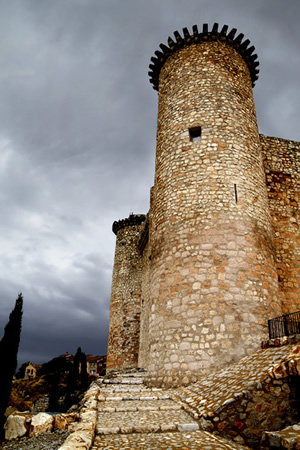Castles
Striking architecture
Some of Europe’s most valued visitor attractions, castles, palaces and mansions are constructions of monumental beauty, usually dating from medieval or early modern times. Spain boasts a notable number of such striking edifices, built in various architectonical styles.

The province of Segovia is an excellent destination for those seeking a deeper insight into Spain’s most imposing constructions. Castillo Cuellar, for instance, dates from the 13 century and took five others to reach its present form.
It takes its name from the town it is located in and was built in a number of phases, which is why a variation of styles (predominantly Renaissance and Gothic) can be observed.
Somewhat more famous perhaps, Alcazar, overlooking the city of Segovia, sometimes referred to as a castle and other times classed as a palace, developed from a 12th century fortress of more modest dimensions. Over the centuries it had a range of functions, including those of a prison and royal residence.
One of the country’s oldest surviving castles, having undergone many renovations, is known as Castillo de la Mota and was first erected in 1080 as a fortress in Medina del Campo, in the province of Valladolid.
Largely built from red brick and initially encompassing a drawbridge, the castle, declared a national monument in 1904, was expanded in medieval times and reconstructed on various occasions, having a turbulent history and having served as a prison for many years.
Other castles with nearly a thousand years of history include Castillo de San Servando in Toledo, built in 1088 as a monastery and Castillo de Zamora, built between the 10th and 12th centuries in Zamora.
Spain’s offshore territories, although mostly known for their leisure facilities today, are also steeped in history and home to stunning structures such as Castell de Bellver on the island of Mallorca.
Travel Guides
AlicanteBarcelona
Cartagena
Corunna
Formentera
Fuerteventura
Gran Canaria
Ibiza
Madrid
Malaga
Mallorca
Minorca
Seville
Tenerife
Valencia
What To Do
Amusement ParksArt Galleries
Bull Fighting
Castles
Concerts, opera and theatre
Eccentric local events
Fiestas and Ferias
Football
Monuments
Museums
Music Festivals
Places of Worship
Religious Events
Seaside Holidays
Sports

